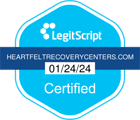
Flexeril, also known by its generic name cyclobenzaprine, is a muscle relaxant commonly prescribed to alleviate muscle spasms, pain, and tenderness. This medication works by blocking pain sensations from traveling to the brain, thereby providing relief from muscle spasms. Typically, Flexeril is prescribed for short-term use, generally up to two to three weeks, to manage acute musculoskeletal conditions.
Flexeril is available in both tablet and extended-release capsule forms, making it versatile for different patient needs. Often, it is used in conjunction with physical therapy and rest to enhance recovery and improve muscle function. By combining medication with physical therapy, patients can achieve better outcomes in managing muscle spasms and related discomfort.
Table of Contents
History and Discontinuation of Flexeril
Flexeril was first approved by the Food and Drug Administration (FDA) in 1977 and was marketed by Merck. Over the years, it became a widely used muscle relaxant for treating muscle spasms. However, in 2023, Merck decided to discontinue Flexeril, primarily due to economic reasons. The availability of cheaper, generic versions of cyclobenzaprine, which offer the same therapeutic benefits, made the brand name Flexeril economically unviable.
It’s important to note that the discontinuation of Flexeril was not due to safety concerns. The Drug Enforcement Administration (DEA) does not classify Flexeril as a controlled substance, and it is not considered a scheduled substance. This means that while Flexeril is a prescription medication, it does not have the same abuse potential as some other drugs.
Despite its discontinuation, generic cyclobenzaprine remains available and continues to be a cost-effective alternative for treating muscle spasms. Patients can still access the therapeutic benefits of cyclobenzaprine without interruption.
When using Flexeril or its generic counterparts, it’s crucial to be aware of potential drug interactions. Flexeril may interact with other medications, including alcohol, which can exacerbate its side effects. Therefore, consulting with a healthcare provider is essential to manage these interactions safely. Additionally, Flexeril should be stored out of the reach of children and should not be shared with others.
In summary, Flexeril was a widely used muscle relaxant for treating muscle spasms, but it was discontinued due to economic reasons. Generic cyclobenzaprine remains a viable and cost-effective option for patients needing muscle spasm relief.
Factors Contributing to the Withdrawal from the Market
Market Forces and Economic Decisions
When delving into the market intricacies, you’ll find that economic decisions heavily influence drug availability. Analysis showed that the ever-changing dynamics of pharmaceutical supply and demand weighed heavily on Flexeril’s presence. As generic alternatives flooded the marketplace, offering similar outcomes at lower costs, Flexeril’s economic footing wavered. Furthermore, pharmaceutical companies’ pivot towards more lucrative or innovative products could have contributed to the decision to discontinue the brand. Such commercial strategies often reshape a patient’s access to medications, which was the case with this muscle relaxant. According to the Substance Abuse and Mental Health Services Administration, an estimated number of people have misused muscle relaxants like cyclobenzaprine, highlighting the risks associated with combining them with other central nervous system depressants.
Implications for Patients and Healthcare Providers
Managing Patient Care Post-Flexeril: Cyclobenzaprine Withdrawal Symptoms
The discontinuation of Flexeril necessitates a proactive approach in managing patient care. It is crucial to monitor for signs of substance abuse and addiction, as misuse of cyclobenzaprine can indicate broader issues with substance abuse. Healthcare providers should prioritize comprehensive care plans that address any potential withdrawal symptoms and outline steps for medication adjustment. For some patients, this may include transitioning from Flexeril to inpatient treatment programs, which offer the benefit of 24/7 support and a structured environment conducive to recovery. Others may find outpatient programs more suited to their needs, enabling them to maintain work and family commitments while receiving treatment.
It’s also an opportune moment to examine the effectiveness of current treatment protocols, possibly integrating a more holistic approach that includes physical therapy or lifestyle modifications. Continuous education and support for patients undergoing medication changes are paramount to ensure a smooth transition and maintenance of quality of life.

Exploring Alternatives to Flexeril
Pharmaceutical Options Available in the Absence of Flexeril: Other Muscle Relaxants
In the wake of Flexeril’s absence, you’re likely wondering about the pharmaceutical options at your disposal. It is crucial to be aware of the risks associated with combining cyclobenzaprine with other muscle relaxants, as such combinations can lead to serious health issues, including life-threatening overdoses and adverse effects when mixed with alcohol and CNS depressants.
Pharmaceutical Options Available in the Absence of Flexeril
In the wake of Flexeril’s discontinuation in the United States, you’re likely wondering about the pharmaceutical options at your disposal. The good news is, there are several. Amrix, an extended-release capsule available in doses from 15 to 30 mg, and Fexmid, which also contains the active ingredient cyclobenzaprine, serve as direct alternatives to Flexeril. Generics offer the same cyclobenzaprine benefits in the form of tablets, frequently at a reduced cost, ensuring that therapeutic needs continue to be met without interruption. When considering these alternatives, it’s important that you consult with your healthcare provider and perhaps visit a trusted pharmacy to determine the best fit for your specific situation.
Non-Medicinal Treatments for Muscle Spasm Relief
Turning to non-medicinal treatments can offer relief and complement pharmaceutical approaches to muscle spasm management. The muscle relaxant Flexeril (cyclobenzaprine) was commonly used for relief from acute pain associated with various musculoskeletal conditions before its discontinuation, leaving patients seeking alternatives. Physical therapy stands out as a cornerstone, with tailored exercises designed to strengthen muscles and improve flexibility, crucial for addressing issues like strains and promoting healing. Heat or ice treatments and massage therapy can provide localized relief, targeting areas of tenderness and reducing discomfort. Additionally, considering practices like yoga or acupuncture may offer respite and enhance overall well-being. Lifestyle adjustments, such as proper hydration, balanced nutrition, and sufficient sleep, also play a critical role in preventing and managing muscle spasms. Consult your healthcare provider for a personalized regimen that fits your health profile.
Zanaflex VS Flexeril
Although they both relaxants used to treat muscle spasms, Zanaflex (tizanidine) and Flexeril (cyclobenzaprine) operate through different mechanisms and have different profiles. Usually targeting the central nervous system to lower spasticity, zanaflex is an alpha-2 adrenergic agonist that works well for disorders including multiple sclerosis or spinal cord injuries. Its rather short half-life means faster beginning but careful dosing is necessary to prevent too strong sedation. More suited for treating muscle strains or injuries, Flexeril, a tricyclic antidepressant derivative, acts by blocking nerve signals in the brain. Though it usually acts longer-acting, flexeril may cause more sedation and side effects including dry mouth or blurred vision. Selecting one of them will rely on the particular medical condition, intended length of action, and possible side effects for the patient.

Debunking Myths and Addressing Misconceptions
Clarity on Addiction and Abuse Potential
It’s critical to address any concerns about the potential for addiction and abuse when it comes to muscle relaxants like Flexeril. While Flexeril has been associated with less abuse potential compared to other classes of muscle relaxants, its potential for psychological dependence and misuse is not negligible, particularly when used concomitantly with substances like alcohol or opioids. However, knowledge is power, and being informed about the proper use and the risks involved with prescription medications can help prevent misuse. Always follow the guidance of your healthcare provider closely and report any concerns about dependency or side effects. Education on this matter is a safeguard against the misuse of medicines such as binge consumption that may lead to overdose.
Understanding Medication Regulation and Control
Grasping the intricacies of medication regulation and control is crucial, especially when a drug like Flexeril gets discontinued. Withdrawal symptoms experienced by individuals discontinuing cyclobenzaprine can be similar to those using tricyclic antidepressants, highlighting the potential discomfort and the importance of medical supervision when tapering off such drugs. Regulatory bodies like the FDA keep a vigilant eye on drugs’ safety and efficacy, ensuring that what reaches you is up to standard. They also take careful precautions to protect public health, including routine reassessment of medications to identify any risks or the need for alterations. These agencies implement controls based on clinical data, reported side effects, and broader public health outcomes. Understanding this process demystifies medication approval and withdrawal, providing reassurance about the thorough oversight designed to protect patient health. If you have questions or concerns about the medications you use, don’t hesitate to reach out to your pharmacist or doctor for insights into these regulatory checks and balances.
The Industry’s Response to Cyclobenzaprine’s Discontinuity
Pharmacists’ Role in Easing Patient Concerns
Pharmacists play an instrumental role in bridging the information gap when medications like Flexeril are discontinued. They serve as an accessible resource for explaining the reasons behind such changes, offering peace of mind through education. Pharmacists can also advise on safe and effective alternatives, help manage transitions to new medications, and monitor for potential interactions. Rely on your local pharmacist to address concerns, provide support, and ensure you continue to receive the best care for your muscle spasm relief.
Innovations and Research in Muscle Relaxants Post-Flexeril
With Flexeril’s departure, the spotlight turns to ongoing research and innovations in muscle relaxant therapies. Scientists are steadily working towards developing drugs with improved profiles that minimize side effects and maximize effectiveness. Emerging treatments, like novel drug delivery systems or targeted therapies, offer hope for more personalized and efficient patient care. It’s an exciting time, as each breakthrough brings potential advancements in muscle spasm management that could redefine treatment standards in the future. Stay tuned to medical news to track these developments and learn about the latest options as they become available.
Latest research breakthroughs:
Novel Mechanisms of Action: Research has led to the development of muscle relaxants that target different pathways, improving efficacy and reducing side effects.
Improved Safety Profiles: New formulations are being designed to minimize sedation and other adverse effects commonly associated with traditional muscle relaxants.
Biologics and Gene Therapy: Emerging therapies are exploring the use of biologics and gene therapy to address underlying muscle disorders more effectively.
Combination Therapies: Studies are investigating the effectiveness of combining muscle relaxants with other treatments for enhanced relief and better patient outcomes.
Personalized Medicine: Advances in pharmacogenomics are paving the way for tailored muscle relaxant therapies based on individual genetic profiles.
Long-Acting Agents: New long-acting muscle relaxants are in development to provide sustained relief, reducing the need for frequent dosing.
FAQs About Flexeril
What led to the discontinuation of Flexeril?
Flexeril’s discontinuation is believed to stem from economic reasons rather than safety concerns. With less expensive generic versions of cyclobenzaprine available, the brand name Flexeril became economically unviable. Additionally, the potential for misuse and competition may have influenced the decision.
Are there any risks associated with alternatives to Flexeril?
Yes, alternatives to Flexeril also carry risks. Side effects can range from dizziness to more serious heart issues, depending on the medication and individual health profiles. Always consult with a healthcare provider before trying a new treatment.
What should patients do if they were previously prescribed Flexeril?
Patients previously on Flexeril should consult their healthcare provider for alternative medications or treatments. H3: What should patients do if they were previously prescribed Flexeril?
Patients previously on Flexeril should consult their healthcare provider for alternative medications or treatments. It’s crucial not to stop suddenly without professional guidance to prevent cyclobenzaprine withdrawal symptoms, which might include muscle cramps and drug cravings.
How can healthcare providers help patients transition from Flexeril?
Healthcare providers can assist patients transitioning from Flexeril by evaluating their condition, prescribing alternatives, and monitoring reactions to ensure the effectiveness and safety of the new regimen.
Can patients still find generic versions of cyclobenzaprine?
Yes, generic versions of cyclobenzaprine remain available and are a cost-effective alternative to Flexeril for muscle spasm treatment. Patients should discuss with their healthcare provider for appropriate prescriptions.
Dr. Mitchell G. Cohen is a board-certified Internal Medicine specialist with over 34 years of experience in patient-centered healthcare. A graduate of Hahnemann University School of Medicine, Dr. Cohen completed his internship at the University Health Center of Pittsburgh, where he gained invaluable hands-on experience. He is also a certified addiction specialist, holding membership with the American Society of Addiction Medicine (ASAM).
Currently based in Nashua, NH, Dr. Cohen is affiliated with Saint Joseph Hospital, where he provides comprehensive care focusing on both internal medicine and addiction treatment. His expertise includes prevention, diagnosis, and management of adult diseases, as well as specialized care for individuals facing substance use disorders.
Dr. Cohen is committed to fostering open communication, ensuring his patients are fully informed and empowered to make confident decisions about their health and treatment options.

MD Mitchell Grant Cohen
Dr. Mitchell G. Cohen is a board-certified Internal Medicine specialist with over 34 years of experience in patient-centered healthcare. A graduate of Hahnemann University School of Medicine, Dr. Cohen completed his internship at the University Health Center of Pittsburgh, where he gained invaluable hands-on experience. He is also a certified addiction specialist, holding membership with the American Society of Addiction Medicine (ASAM).
Currently based in Nashua, NH, Dr. Cohen is affiliated with Saint Joseph Hospital, where he provides comprehensive care focusing on both internal medicine and addiction treatment. His expertise includes prevention, diagnosis, and management of adult diseases, as well as specialized care for individuals facing substance use disorders.
Dr. Cohen is committed to fostering open communication, ensuring his patients are fully informed and empowered to make confident decisions about their health and treatment options.







